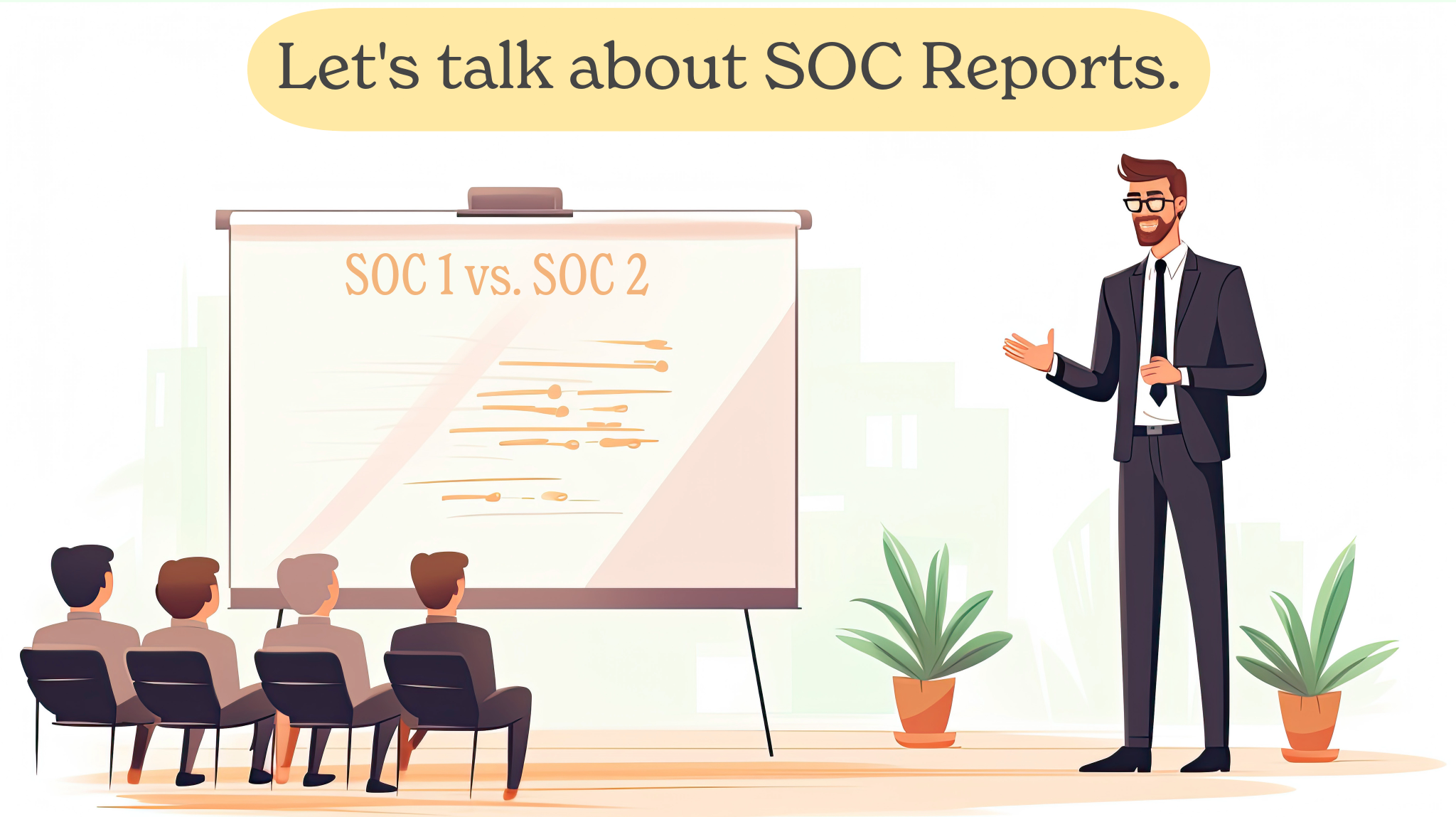SOC 1 vs. SOC 2: Which Report You Need and Why
Many people scour the internet using the search term “SOC 1 vs. SOC 2.” Broadly speaking, the differences between these SOC Reports are as follows:
SOC 1 Reports are designed for financial statement audits and focus on internal controls related to financial reporting.
SOC 2 Reports are designed to evaluate a service organization's controls over non-financial information, such as data security, privacy, and confidentiality.
However, it’s likely that if you’re searching “SOC 1 vs. SOC 2,” you are actually looking for the difference between the two types of SOC 2 Reports (i.e., “SOC 2 Type 1 vs. SOC 2 Type 2”). Because of this likelihood, we'll focus primarily on SOC 2 reports in this article, which is the second entry in Securily's Knowledge Base Series.
SOC 2 Deep Dive
SOC 2 reports assess compliance with the five Trust Services Criteria, namely: security, availability, processing integrity, confidentiality, and privacy. Every organization must comply with the first criterion, security, while compliance with the remaining criteria are dependent on how a business uses and processes data (You can learn more about choosing an appropriate framework in our partner Vanta's Trust Services Criteria Guide.)
There are two types of SOC 2 Reports that an organization may need: a Type 1 Report and a Type 2 Report. Both types assess how an organization aligns with the security controls and policies required by SOC 2, but the differences are as follows:
SOC 2 Type 1 Reports measure an organization’s compliance at a single point in time.
SOC 2 Type 2 Reports demonstrate ongoing compliance with SOC 2 controls; certification can only be granted after a 6-month observation period.
Choosing the right report will likely depend on the client (or partner) who has requested a report from your organization. However, many organizations begin with a Type 1 report and then enter the observation period for a Type 2 report. Proactive organizations do not wait for potential business to hinge on the completion of a SOC 2 Report, because doing so can stall sales cycles and result in lost business.
When should I get SOC 2 certified?
In 2023, the average cost of a data breach in United States was 9.48 million dollars, nearly twice the global average. Many companies—especially SMB's—are unprepared for cybersecurity attacks and find themselves in reactive positions regarding compliance when security issues inevitably occur. This lack of preparedness is usually attributed to a lack of resources or ignorance regarding cybersecurity posture. (For example, as of 2022, only 50% of SMB's had any formal cybersecurity plan, and some small businesses erroneously believed they were "too small to be a target.") But regardless of whether a company has 5 employees or 500, the absence of cybersecurity measures not only makes the company more vulnerable to attack, the would-be attackers can succeed at a much higher speed and level of efficiency.
There is no excuse for a lack of compliance, especially now that the SEC has put forth a series of rules regarding cybersecurity risk management for publicly traded as well as private organizations. Additionally, many potential customers now require SOC 2 certification from vendors because 98% of businesses have a vendor that has been compromised within the last two years. Vendors should follow their own security protocols to reduce risk and protect themselves from malicious attacks that could also harm their clients.
It is best to get SOC 2 certified before you are faced with losing business opportunities due to lack of certification, or worse, before your own systems are compromised because of unprotected vulnerabilities in your cybersecurity posture. Becoming compliant ensures that your organization has taken the necessary precautions to protect its systems and data from unauthorized access.
How long does it take to get certified?
The time required to become SOC 2 certified depends on several factors, including:
- The quality of controls already in place
- The type of report you are seeking (i.e., Type 1 or Type 2)
- Your team's expertise, availability, and resources
Organizations that take a "do-it-yourself" approach to compliance may spend up to 12 months (or longer) preparing themselves for an audit, likely due to a lack of time and expertise of their internal teams. Obviously, a considerable loss of revenue can occur in that period of time.
Securily’s expertise lies in jump-starting your compliance journey and getting you to an audit-ready state in 1-to-3 months. If you want your compliance journey simplified and expedited, be sure to book a call with us.
SOC 2 Reports: Costs and considerations
It’s important to estimate and budget for both becoming compliant and the ongoing maintenance of your certification. Here are some costs to consider:
Compliance software
Security tools and services
Penetration tests
Engineers to remediate issues
Administrative cost of drafting new policies
Background checks for new employees
Many of the above costs can be bundled by providers (like Securily) and can save as much as 50% of your budget as compared to utilizing multiple vendors. But regardless of the cybersecurity strategy you choose, it is the ethical responsibility of every organization to prioritize security. It is vital to protect your data as well as your customer's data. Not doing so can result in significant losses that could damage your reputation, your customers, and your business. Achieving and maintaining SOC 2 compliance can send a clear message that security is a pillar of your organization and that you are a trustworthy company.
